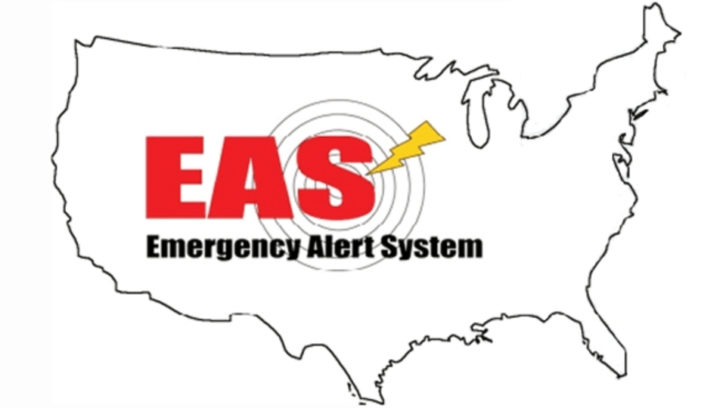FCC Releases Results of 2019 EAS Test
The country’s broadcast-based EAS distribution system works as it should; there are areas for improvement

WASHINGTON—The results of the 2019 EAS test are in.
The Federal Communications Commission released the results from the August 2019 nationwide EAS test, which demonstrated that the nation’s broadcast-based EAS distribution system largely works as designed—though the test did expose several issues within the system that require improvement.
The Aug. 7, 2019, test marked the fifth time a nationwide EAS test has been conducted by the Federal Emergency Management Agency in coordination with the FCC. This test used only the broadcast-based distribution system and as in previous tests, the purpose was to evaluate the readiness of EAS participants to receive and then retransmit the alert to other stations.
An FCC analysis of the 2019 test found much good news, starting with the fact that a significant majority of the EAS participants successfully received the national periodic test code (NPT) and then turned around and retransmitted the NPT to other EAS participants. Other good news: this time around, 20,250 participants were involved with the 2019 test, marking a participation rate of 78.6%, which is up slightly from 76.3% in 2018.
As in previous tests, radio topped the list with 82% of stations participating, up from 78.7% in 2019. Participation was lower overall for both TV and cable in 2019 with 68.2% of television broadcasters participating and 73.4% of cable systems, IPTV and wireline video system participating in the test.
Low-power broadcasters had some of the lowest levels of participation with 55.9% for LPFM and 48.1% for LPTV. Yet there is some good news to be found. Low-power filings increased by 292 in 2019 when compared with 2018.
This time around, participants were again expected to submit information via three separate forms. Form One asked EAS participants to report basic identifying information including ownership information and the name of their EAS equipment; Form Two asked participants to report day of test results, including whether they had successfully received and retransmitted the test alert; and Form Three asked participants to report more detailed test results, such as the first source from which the alert was received.
Get the TV Tech Newsletter
The professional video industry's #1 source for news, trends and product and tech information. Sign up below.
The test also asked participants to report the languages in which they received and retransmitted the test alert. This year, the test alert message was sent only in English; in previous years, the message was sent in both English and Spanish.
As anticipated, the test also shed light on challenges that impeded the ability of some EAS participants to receive and/or retransmit the NPT.
Test participants reported problems with equipment configuration, audio quality, alerting source problems and clock errors, among other issues. The retransmission issue with the highest number of reported problems: the transmission was not received at all. More than 2,530 test participants reported this problem. Other issues included audio issues, power issues, signal issues, internet issues and even lightning—20 participants reported issues caused by bolts of electricity from above.
This year, several State Emergency Communications Committees (SECCs) reported to the FCC that certain areas of their state did not receive the alert. SECCs from Florida, Michigan and Georgia reported delivery problems to the Primary Entry Point (PEP) stations. The FCC also received reports of smaller-scale monitoring source issues in parts of Wisconsin, North Dakota, Colorado, North Carolina and New Hampshire.
FEMA also confirmed that several PEPs did not transmit the alert due to varying degrees of equipment failures. Overall, FEMA reported that of 77 PEP stations, 12 (approximately 16%) experienced technical issues receiving and retransmitting the alert on the test day.
When it comes to next steps, both the FCC and FEMA said they plan to take measures to continue to improve the EAS system. The FCC plans to conduct targeted outreach to look into operational complications as well as improve participation in the nationwide test. FEMA notes that it is actively taking measures to improve PEP performance going forward.
“The 2019 nationwide EAS test was successful in that it demonstrated that the nationwide broadcast-based EAS distribution system would largely perform as designed, if activated without the availability of the internet,” the FCC said. “At the same time, the test exposed several deficiencies within the system that require improvement. [C]ontinued and regular testing of the system will help ensure that any needed improvements and adjustments are made to address those circumstances that can be identified in advance, and that EAS equipment is in reliable working order.”
This story originally appeared on TVT's sister publication Radio World.
Susan Ashworth is the former editor of TV Technology. In addition to her work covering the broadcast television industry, she has served as editor of two housing finance magazines and written about topics as varied as education, radio, chess, music and sports. Outside of her life as a writer, she recently served as president of a local nonprofit organization supporting girls in baseball.

